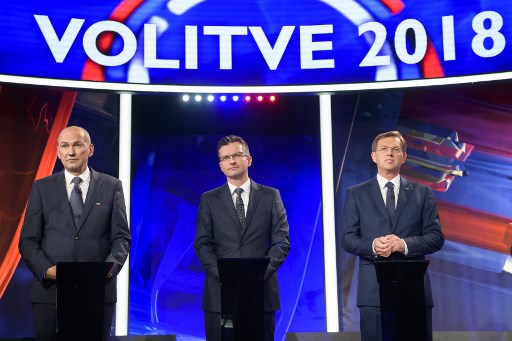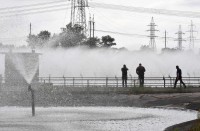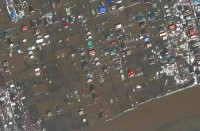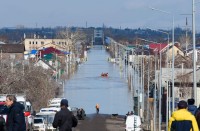
LJUBLJANA, Slovenia (AFP) — Slovenia’s former center-right Prime Minister Janez Jansa and his Democratic Party (SDS) look set to emerge on top in early parliamentary elections on Sunday, as campaigning enters the home stretch.
The campaign has been overshadowed by controversy over Jansa’s strident anti-migrant rhetoric and the public support he has received from fellow firebrand Hungarian Prime Minister Viktor Orban.
According to the latest poll published by daily Dnevnik on Wednesday, Jansa’s SDS is on 25.5 percent, which would leave it as the biggest party but with a tricky path to a parliamentary majority as at this stage its only likely partner would be the center-right Nova Slovenija, which is on just 8.3 percent.
Comedian-turned-politician Marjan Sarec and his “anti-system” LMS party are projected to come second with 13.7 percent of the vote.
That would leave Sarec well placed to play kingmaker and so far he has rejected any alliance with the SDS.
“Spreading fear (of migrants) and getting the prime minister of a neighboring country (Orban) involved in our elections, has crossed all red lines and I and our members do not see ourselves in such a constellation,” Sarec recently told AFP.
Outgoing Prime Minister Miro Cerar’s Modern Centre Party (SMC) is on just 8.8 percent in the poll, with his other coalition partners the Social Democrats (SD) and pensioners’ party DESUS, are on 12.5 percent and 8.1 percent respectively. All have ruled out collaborating with Jansa.
Unstable future
But political analyst Matevz Tomsic warned that once the results come in, the “cards will be dealt out again… the situation changes, parties reconsider, new alliances emerge”.
It’s hard to predict whether Jansa will succeed in putting together a coalition but it is possible, Tomsic told AFP.
Jansa himself has said he is confident that coalition partners will be forthcoming once the results are in.
Whether the new government is formed by the SDS or by the center-left, “it won’t be a very stable one”, Tomsic said.
Indeed, the election was called following Cerar’s resignation in March which itself was caused by months of infighting within his government, as well as a wave of public-sector strikes.
The final straw came when a supreme court verdict on a flagship infrastructure project went against the government.
Combative tweets
Orban’s high-profile support for Jansa has been much-discussed in recent weeks, especially after Orban took part in an SDS party convention and said an SDS victory “would ensure the survival of the Slovenian people”.
According to Slovenian media reports, Jansa’s media campaign has also been boosted by investments to the tune of two million euros from Hungarian media companies in a TV station and newspaper co-owned by SDS.
Like rightwing leaders elsewhere Jansa has adopted a combative presence on Twitter and has used it to defend his alliance with Orban.
“Thanks to its (migration) policy, Hungary is a safe country while Belgium, due to its wrong policy, isn’t,” read a recent Jansa tweet.
Almost 500,000 migrants crossed Slovenia in late 2015 and early 2016 along the so-called Balkan route.
Jansa has effectively evoked the memory of the crisis to his advantage despite the fact that only a tiny fraction of the migrants stayed, with most continuing to northern Europe.
Turnout clues
For the first time in over a decade, elections will take place against a backdrop of strong economic growth rather than of financial crisis or recession.
But the government has not reaped any political benefit from improved economic growth, with the campaign instead dominated by growing hospital waiting lists, demands for higher pensions and wages and for a better environment for businesses.
Some 1.7 million Slovenes will be eligible to vote in Sunday’s poll, with first results expected shortly after polls close.
Turnout may give a clue as to exactly how well the SDS has done, according to pollster Andraz Zorko.
As its voters tend to be more likely to turn out, a lower overall turnout could help the SDS, Zorko told the Delo daily.
© Agence France-Presse







